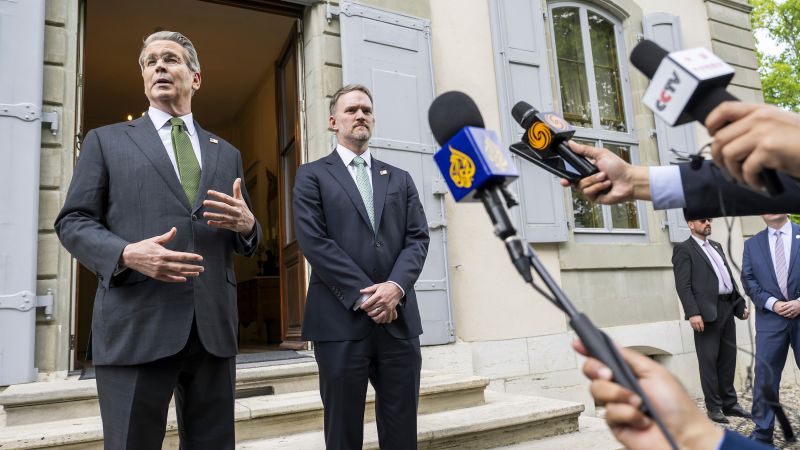Recent high-level trade negotiations between the United States and China have led to optimistic developments, as key officials from both nations have reported making significant progress in their discussions. Following two intense days of talks in Geneva, Switzerland, U.S. Treasury Secretary Scott Bessent expressed satisfaction with the outcomes, describing the negotiations as productive. This announcement has bolstered expectations that a formal trade agreement may soon be reached, a development that could have extensive ramifications for the global economy.
Bessent’s positive declaration came in a brief statement where he noted the importance of these trade talks amidst the backdrop of escalating tariffs imposed by President Donald Trump. In a notable move last month, Trump had enacted a sweeping 145% tariff on a broad array of Chinese imports, a decision that had raised alarm among various stakeholders regarding its economic implications. The weight of these tariffs has rendered a successful resolution to the trade dispute critical, not only for the two nations involved but also for allies and markets worldwide that are interconnected with U.S.-China trade relations.
Adding weight to Bessent’s assertions, U.S. Trade Representative Jamieson Greer confirmed that an agreement has reportedly been finalized. During the discussions, Greer remarked on the necessity of resolving the national emergency prompted by the tariffs, indicating that the newly struck deal with China would pave the way toward alleviating these tensions. His comments underscored a sense of urgency and significance surrounding the trade talks, and he expressed confidence in the deal’s potential to ultimately address and rectify the ongoing economic crisis spurred by the unilateral tariffs.
One notable element of the discussions was the promptness with which an agreement was reached, leading Greer to suggest that perhaps the discrepancies between the two nations were not as pronounced as earlier believed. This observation might signal opportunities for future cooperation and negotiations, alleviating previous concerns about an entrenched standoff. The willingness of both sides to engage in constructive dialogue over two days of intensive discussions is indicative of a mutual recognition of the necessity for resolution.
In light of these developments, media outlets such as CNN have been actively seeking further clarification from the Treasury Department regarding the specifics of the agreement. Although detailed information was not immediately available during the talks, Bessent indicated that key details would be shared publicly the following Monday morning. Despite the generally optimistic tone emanating from the discussions, some U.S. officials had initially tempered expectations ahead of the negotiations, signaling that resolutions in such contentious areas often take time and careful maneuvering.
In relation to the negotiating process, Greer commented on the expertise of the Chinese delegation, describing them as “very tough negotiators.” His remarks highlighted both the diligence and the collaborative atmosphere fostered during what he deemed a “very constructive” series of meetings. Ultimately, Bessent and Greer did not take questions from reporters immediately after the discussions, but they indicated that they had briefed President Trump, who they characterized as being “fully informed” about the developments of the negotiations.
The evolving trade dynamics between these powerhouses hold great importance for international economic stability. As both the U.S. and China maneuver through the complexities of trade relations, the next steps taken by both administrations will be crucial in shaping not only their bilateral relationship but also the broader landscape of global trade practices. The successful resolution of this trade tension could reinvigorate markets and restore faith in collaborative international economic strategies, setting a precedent for future negotiations on pressing global issues.



